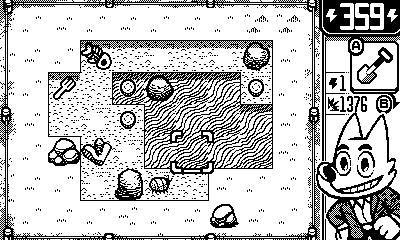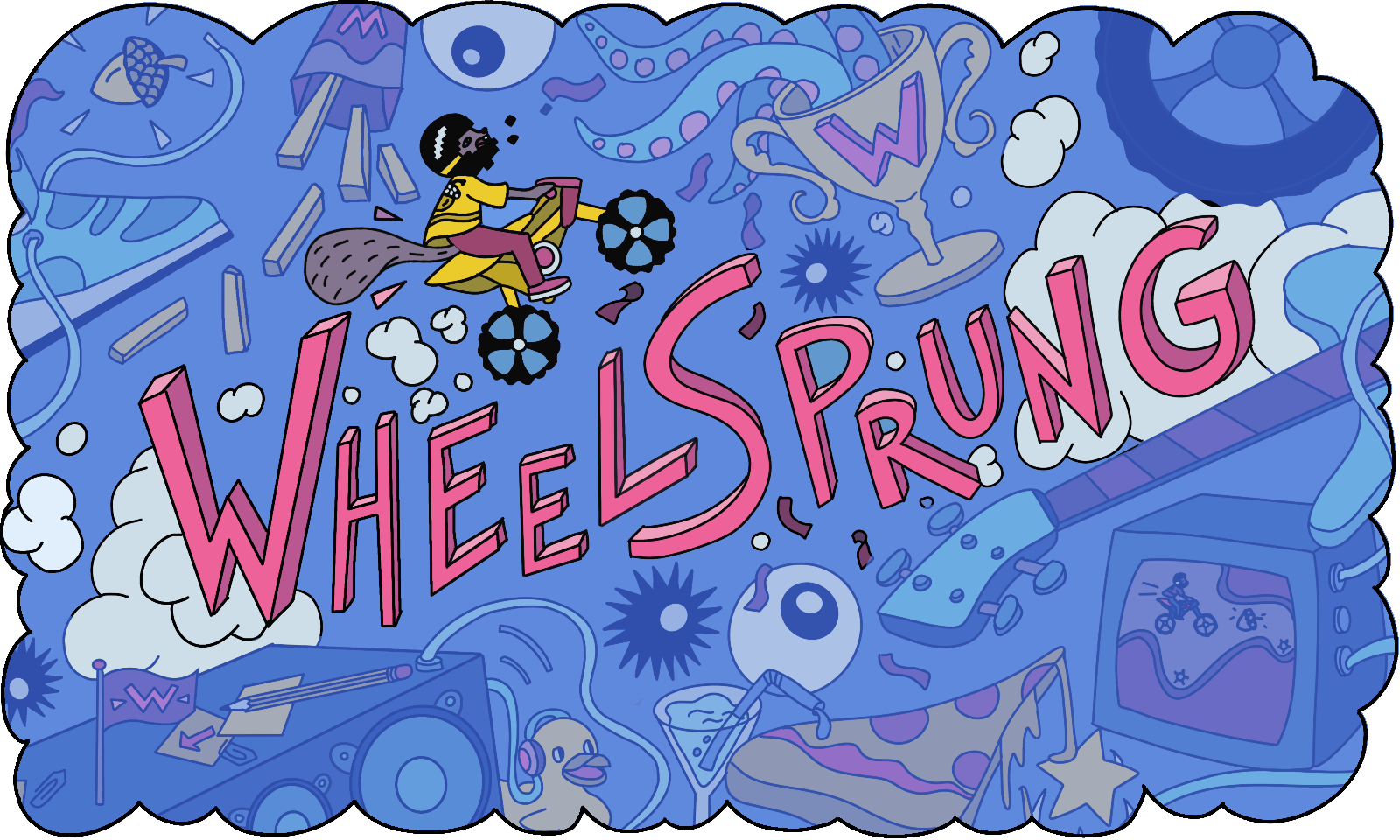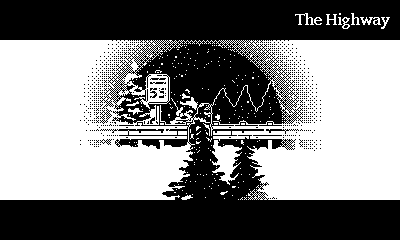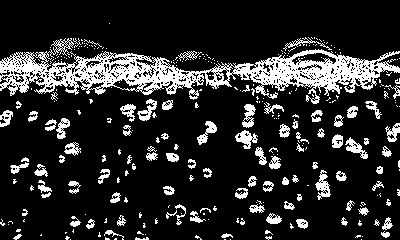Playdate Season 2 review - Part 1
As mentioned in our Playdate device review, I had thought Panic’s idea of releasing a bundle of games incrementally, timed out over multiple weeks as a “season” of content, was a genuinely cool experiment. Unfortunately due to the pandemic and supply chain issues, no one ended up receiving their Playdates at the same time. So the communal experience of playing these games together, focusing and discussing the same titles at the same time, never really materialized. And thus Season 1 was kind of a bust.
Additionally, with people now able to easily purchase and download individual games through Catalog, the Season release structure looked kind of irrelevant. So, despite how likely I was to purchase another curated bundle of indie games for the little yellow handheld, the prospect of attempting a Season 2 seemed extremely farfetched. And then—out of nowhere—Panic announced Playdate Season 2 was kicking off May 29, 2025. Well, ok then, I’m down for that!
So, to celebrate and participate in a season where we might all be playing the same things at the same times, we are going to review all the games in Playdate Season 2. This will be two posts: we’ll look at the first half of the season here and then cover the back half next time. We’re super excited to play everything on offer, so let’s get down to business….
Week 1
Fulcrum Defender is a crank-controlled shooter in which the player sits at the center of a circular play field, with various geometric shapes moving toward your position menacingly. You need to shoot the enemy shapes before they make contact with your turret and damage your shields. This feels a lot like playing Asteroids without ever moving your ship around the space…which is how I often tried to play that game, at least at first. Your aiming is directed with the crank and shots are fired by pressing Up on the D-pad.
Shooting too quickly will cause your guns to overheat, leaving you unable to fire for a bit while you reload, meaning one has to be somewhat selective with their shots. After taking enough hits, your shields will be fully deleted and the game is over, so each run is trying to see how long you can survive. If you manage to last 10 minutes, the game will say, “YOU WIN!”...however the game will continue running, so you are able to go for high scores beyond that 10-minute goal.
Along the way new weapons and power-ups can be unlocked, with the player getting to choose between two options with each upgrade. The power-ups can be things like firing and reloading faster, firing a second shot backwards everytime you shoot forwards, or having your shots bounce back off the wall for a second chance to hit a target. The new weapons are things like a drone that will fly around the play field and fire on enemies (Asteroids-style) or a giant ball-and-chain flail that you swing around your ship using the crank.
This game was created by Jay Ma, co-founder of Subset Games (FTL: Faster Than Light, Into the Breach), with music by Aaron Cherof. The music is especially cool in this game, generally chill and downbeat melodies, lending a relaxing and meditative feel to the action. Interestingly, the sound effects played when targets get hit are actually samples of various percussion instruments. So as you clear enemies off the field, the rhythm of your actions adds to the game’s soundtrack. Brilliant!
All things considered, Fulcrum Defender is an excellent game, and a fantastic inclusion for Playdate Season 2. The use of the crank as the primary control input, combined with the generally high quality of the game design, makes this title perfectly suited for the little yellow handheld. It’s another prime example of why the Playdate is so special.
Dig Dig Dino! is a chill puzzle game built around digging. You aim to dig up fossils and artifacts, but will also pull out plenty of trash, loose coins, and gems along the way. The visual aesthetic and overall presentation are cute and super charming—which reminds me a lot of Pick Pack Pup, my No.1 favorite game from Playdate Season 1.
The structure of Dig Dig Dino consists of a surprisingly satisfying game loop: Dig to collect items and money, use money to upgrade your equipment and skills to dig further the next time, check on progress with recovered fossils and artifacts, and go back to digging again. The way the game starts you off with quite limited tools and energy, then unlocks more capacity via upgrades along the way, manages to both ease the player into the game and keep them invested with incremental progress feels like very savvy game design. Normally I am put off by such grind-to-upgrade-to-grind-more mechanics, but here it feels more complementary than compulsory to the core gameplay.
And the digging in the game feels really darn good! The way you excavate one layer of earth just to find another underneath—which can then also be dug through to reveal yet another below, and so on, and so on—is oddly satisfying. When you only have so much energy to sustain you and new obstacles present themselves in lower levels of dirt, such as big rocks that need to be busted up with the drill, the puzzle-like problem-solving can become almost hypnotic. There is something about finding numerous objects in the various levels of earth—with new obstacles overlapping in such a way that higher-level rocks must be broken before the lower-level rocks can be dealt with—that’s just inexplicably fun.
As you progress through the game, not only can new power-ups be obtained and leveled-up, but new digsites are unlocked. There are only three sites in total, and each one of them takes up the same amount of space on screen. However, digsites 2 and 3 come with new materials to interact with and types of currency to collect, and require increasingly more energy to dig through. As dino bones and ancient artifacts are recovered and analyzed, the game gradually reveals more details about a prehistoric dinosaur society and what fate ultimately befell it. I don’t want to spoil anything here, but suffice it to say, things get kinda weird. And for such a cute game, the ending is surprisingly dark…
While the overall presentation of Dig Dig Dino is wonderful—the newspaper pages you scroll through with the crank, for example, are a nice touch—I do feel that the music is a bit of a mixed bag. The background track that plays while you’re digging in Digsite 1 is a great tune, perfectly suited for the puzzle-like nature of the gameplay. However, the background music played in Digsite 2 is merely a variation on the same melody from Digsite 1, pitched down a bit with some minor key notes slotted in to give it a more dissonant sound. Digsite 3 then uses this same tune a third time, but pitched down further with even more dissonance layered on, to give the stage an ominous sense of foreboding. While this musical choice seems good in theory, I just don’t really like how it sounds in the game. The music works perfectly well for Digsite 1, but the minor key variations for sites 2 and 3 are not nearly as good. On the sound effect side though, all of the noises for digging, drilling, dynamiting, collecting coins, gems, trash, etc., are fantastic.
Dig Dig Dino is another solid gold hit for the Playdate. I can see why Panic chose this game and Fulcrum Defender to kick off Season 2; they’re both perfect examples of what this handheld can do. The chill puzzle-digging gameplay, the charmingly cartoony characters and visual aesthetic, the high-quality sound design, and a mysterious metanarrative to uncover along the way—this might be my favorite game of Playdate Season 2. Guess we’ll just have to see…
Week 2
Wheelsprung is a physics-based side-scrolling motorcycle stunt game where you play as a squirrel on a tiny dirt bike riding dangerously through a family’s house to collect nuts. As is usually the case with this genre, the fun is found in toying around with the in-game physics and working out how to get through each challenge, which are presented as small individual stages. Of course the cartoon aesthetic of Wheelsprung’s environments and daredevil squirrel add a lot of charm to this particular package.
The key to Wheelsprung’s gameplay is maneuvering three circular elements: the bike’s front wheel, the bike’s rear wheel, and Flippy the Squirrel’s head. (Oh yeah, apparently the squirrel’s name is Flippy, although the game never tells you this.) Naturally, the bike’s wheels can roll along the ground, but Flippy’s head can’t make contact with any surface. There are also spikey obstacles found around most tracks that pop your tires if touched, so they need to be avoided. Basically the game involves pulling off increasing rad stunts, in order to collect a victory trophy at the end, without crashing out.
Pressing Left or Right pitches the bike forward and back, so you’re basically always finessing these controls to keep the bike upright. The A Button accelerates the bike, the B Button is the break, and pressing Down causes Flippy to change direction. Simply laying on the gas will cause the bike to slowly pitch backwards on its rear wheel, so you need to adjust with the D-pad (Left & Right) lest you roll the bike over and crash Flippy’s head into the ground.
Wheelsprung is cute and pretty fun, although I do wonder if some players will be put off by the trial and error gameplay of trying to solve each track. Certainly this style/genre has its fans, but I don’t necessarily count myself among them. Still, in just giving it a little time, the game has certainly grown on me. Plus the bitesize nature of each challenge makes it pretty ideal for playing on a handheld. It might be an acquired taste, but I think it’s worth giving this one a spin.
An old-school narrative adventure with a side-scrolling perspective, The Whiteout follows a man trying to survive in an icy apocalypse of permanent winter. Frankly, this kind of adventure game isn’t really my genre, and the sad post-apocalyptic setting doesn’t really help to draw me in. That said, I still tried to give this game the old college try, and I did find it surprisingly compelling.
I think trying to do a Point-and-Click style adventure game on the Playdate is a fairly ambitious endeavor, what with the handheld’s small screen real estate and limited input options, so I have to give the developer credit for really going for it here. And this game was made by basically one person, Steve Chipman of Scenic Route Software.
This is certainly a capital-A Adventure game where you need to find various objects, then use those objects in specific places to overcome an obstacle and advance. Along the way you find notes, pictures, journal entries, and the like which give you more information about the people who inhabited this world and what happened to them. Unfortunately the story is quite dark and depressing, so the more you learn, the more downer the game becomes.
Presentation-wise, the pixel art in this game looks quite good, and the sound design is kind of amazing. The controls took me a while to adjust to, especially how pressing Up on the D-pad always opens your inventory menu. There were many times when I wanted to inspect an object and—perhaps due to the side-on perspective—my first intuition was press Up. But no, the A Button is used to inspect objects, as it’s the general “action” button. Similarly there are times when your player can enter an area in the background, presumably moving “up-screen” to do so. But again, despite the indicator arrow pointing up, you use the A Button to confirm this action. Interestingly, the only function the B Button serves is to make your character walk faster, which is surprisingly similar to how the button is used in Super Mario Bros.
All things considered, while I have a lot of respect for The Whiteout, I don’t know if I’ll play through the game in its entirety. This style of post-apocalyptic adventure game isn’t really my favorite. However, it does make me want to check out another Steve Chipman adventure game on Playdate, Post Hero.
Week 3
If the one exclamation mark used in Dig Dig Dino!’s title felt a little too reserved, get ready for Otto’s Galactic Groove!!. A rhythm game in the same vein as Guitar Hero, Taiko no Tatsujin, or Rhythm Heaven, OGG is played with the crank. Follow on-screen indicators to hit targets along to the beat and play along with this game’s rad soundtrack.
In this case, the beat/note targets are traveling horizontally from the left side of the screen to the right. On the far right-hand side of the screen you have your cursor, and pressing a button—any button; the A Button, B Button, and even the D-pad all work—when your cursor is on a target will hit that beat/note. Now where the target symbols appear vertically on the screen will vary, so you need the cursor up and down to be in the right position to catch targets. This is where the crank comes in, it moves your cursor up and down.
While I was worried that I wouldn’t be able to move the crank quickly and accurately enough to play a rhythm game like this, it actually works quite well in OGG. (Or at the very least, it worked great in Causal/Easy mode.) There are even fantastic control and accessibility options, like a Left-handed mode, an option to invert the crank control, timing assists, auto crank and auto button press options, and more. Hooking into the groove of each track and pressing buttons to the beat was fairly easy to do, and actually quite fun. Depending on the track, it was great to just zone out and follow the targets, tapping along to the music.
In terms of story and visual aesthetic, OGG is super cute and quirky. The protagonist is a little sea slug protagonist venturing across the universe in search of new grooves for his master, who’s an intergalactic DJ. Everything feels very similar in tone and concept to Katamari Damacy, generally lighthearted and fun. The wacky cast of characters were all pretty funny and/or endearing. And you can easily play through the full story mode in one sitting, which is nice.
As for the soundtrack, the musical styles/genres represented were a lot more varied than I was expecting. You have upbeat petty pop tunes that remind me of the music in the aforementioned Katamari or certain parts of Animal Crossing, more rhythmic hiphop beats reminiscent of Jet Set Radio, and even amelodic juggle or techno tracks that vaguely reminded me of the Dreamcast or PS2 era for some reason. There are a couple punk tracks with full vocals that are not only fun to play, they really highlight this game was made by three British people. Love it!
If you wanted more music than can be found in OGG’s Story mode, the Jukebox mode has even more bonus tracks to play though. This includes music from other Playdate games, such as Gun Trails and Reel-istic Fishing. And as if that weren’t enough, you can actually design your own levels with the web-based tool Otto Editor and then sideload them into the game to play! That’s bonkers.
In the end, Otto’s Galactic Groove is another smash hit. An incredibly fun rhythm game that you could do on the Playdate, with more features that you could shake a stick at. Groove is in the heart, indeed.
Long Puppy is a game where you control a weiner dog whose body can extend like an accordion. The titular lengthy dachshund is simply playing catch with his human companion, but the clumsy human always tosses the ball over to a difficult-to-reach location. Luckily our canine protagonist’s body will get longer and longer with each piece of food he eats, ultimately allowing him to retrieve the ball for his master.
Despite having no running or jumping, I would categorize Long Puppy as a platform game, specifically a puzzle platformer. Gameplay consists of exploring a 2D side-scrolling environment using a unique and quite novel control scheme. The crank is used to rotate Long Puppy’s head, pointing his snout in whatever direction the player would like to go. Pressing Up on the D-pad then extends LP’s body out in that direction, and pressing Down collapses his body back. If LP’s front legs can reach down and contact a horizontal surface (i.e. the ground) then his back legs will be pulled up to that location when his accordion body contracts, moving him to the new location. So LP uses a kind of inchworm-style of locomotion to get around.
If the above explanation of Long Puppy’s movement sounds a little awkward, complex, or just plain weird, that’s because it is. The game can feel unusually difficult to wrangle at first. However, it really surprised me how quickly my brain adjusted to these controls and I was able to get into the swing of things. After a couple minutes, I didn’t really feel inhibited by the seemingly unintuitive design.
Of course it gets easier to reach more places once you have consumed some amount of food, as each item LP eats makes his body stretch even farther, similar to Snake. There are also container objects in the world you can interact with, using the A Button to sniff them—such as garbage cans, mailboxes, kitchen cabinets, etc.—and these will often pop out a couple morsels of food for our doggie hero. Big hunks of meat on the bone can similarly be gnawed on for a decent meal, holding down the A Button until it’s all been devoured.
There’s a hidden thing to find in each level too: a wet spot of pee for Long Puppy to sniff. Thanks to the dachshund’s incredible sense of smell, he is able to discover exactly who peed in each location, and log the discovery in Pee Journal. Now if that seems like overly silly nonsense bordering on lowbrow potty humor, just wait until you see the postgame pooping segment. You’re gonna love that part.
One particularly interesting aspect of Long Puppy is the inclusion of a ghost dog who will chase you, attack, and steal the ball from your jaws, if you happen to have it. As it turns out, this is your predecessor, the dog this human had before LP, who died. He’s a jealous spirit though, and shows up to haunt you in every stage. Clearly inspired by the ghost in Spelunky, the ferocious phantom will appear after the stage timer runs out—or immediately after you get to the ball—and will float ominous towards you, looking to cause trouble. While this might provide some impetus for the player to act quickly, it should be noted that the ghost dog is more of an annoyance than an actual threat.
The ghost in Spelunky will kill you instantly, but the ghost dog here just kind of smacks you around and steals the ball. You can get hit over and over with no consequence, other than being slowed down. And if the ghost dog steals the ball, you can actually just steal it right back from him. He’s an interesting addition to the game’s level structure, but potentially an unnecessary one. Maybe it would be more interesting if the ghost dog was a lethal threat, more like Spelunky’s spector? Probably not though, because that would really conflict with the silly, carefree tone of this game.
Definitely do give Long Puppy a spin. It’s a highlight of Playdate Season 2 so far.
Bonus Surprise
Included as a bonus in Season 2, we have Blippo+, a strange app that doesn’t really qualify as a game. Blippo+ is mainly comprised of live-action segments that parody the cable TV experience of the late 80’s and 90’s. This is a grab bag of TV shows and promos connected by an appropriately retro-feeling Channel Guide interface. Visually the app has a grainy, distorted, and/or glitchy aesthetic, with an overall vaporwave style design sensibility. Of course, due to the limitations of the Playdate’s monochrome screen, everything looks like it was filmed on a Game Boy Camera, which makes for some pretty charming visuals, if you ask me.
The actual content of this Blippo TV is mostly campy comedy vignettes and weird performance art pieces. It’s as if someone's improv group was called in and finally got the opportunity to live out their weirdest basic cable programming ideas. The result being a bite-sized TV fever dream you can play on your Playdate of all things. After looking into it a bit, it seems that the Blippo project is largely the work of Telefantasy Studios in Glendale, California. According to their website, Telefantasy Studios is “a video art and creative studio specializing in the creation and production of off-the-wall television shows, music videos, and experimental films”, which kind of explains everything right there.
I suspect some people will find these Blippo shows to be quite funny, but many will think they’re bizarre and not particularly amusing; it kind of depends on your appreciation of/tolerance for camp. Personally I thought the text messages delivered through the Fax channel were quite fun—so surprisingly the non-video bits may have been my favorite part. Also, the channel of “Adult Content” with its visuals heavily distorted by static to the point of illegibility was a fitting parody of kids trying to tune into late night Cinemax when the premium channels weren't included in their family’s cable package. Classic!
What I find most interesting about Blippo+ is that it’s been included in this bundle of Playdate games, when it is clearly not a game. Sure, it has the “video” element of “video game” covered, but none of the “game” aspects. There is no interactivity to be found here, just passive observation. So unless one considers watching cable TV to be a video game…somehow…this certainly wouldn’t qualify as a game. And yet here it is, in all its campy glory.
Blippo+ will almost certainly be the most bewildering inclusion in Playdate Season 2. And considering its competition on that front includes a game about a super stretching dachshund whose poops are measured by the foot, that’s really saying something.
Ok, so that’s it for Part 1 of our Playdate Season 2 review. Join us next time for more indie game fun with a crank, in Playdate Season 2 review - Part 2.















